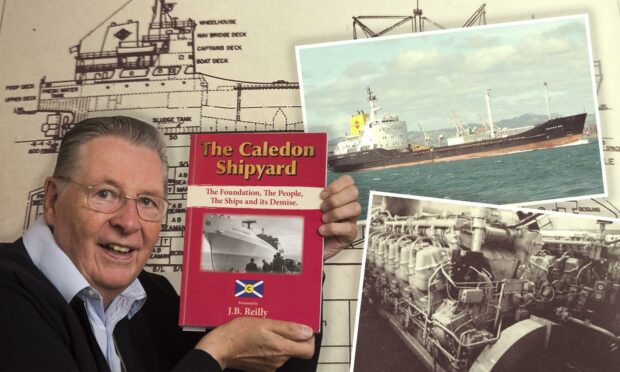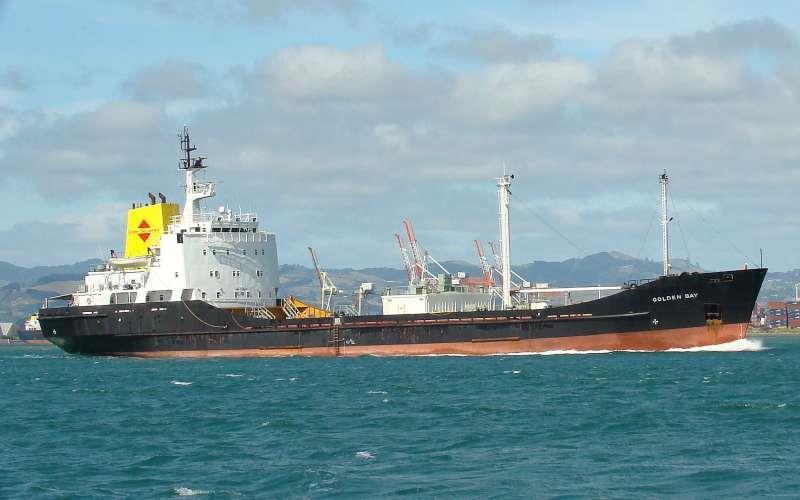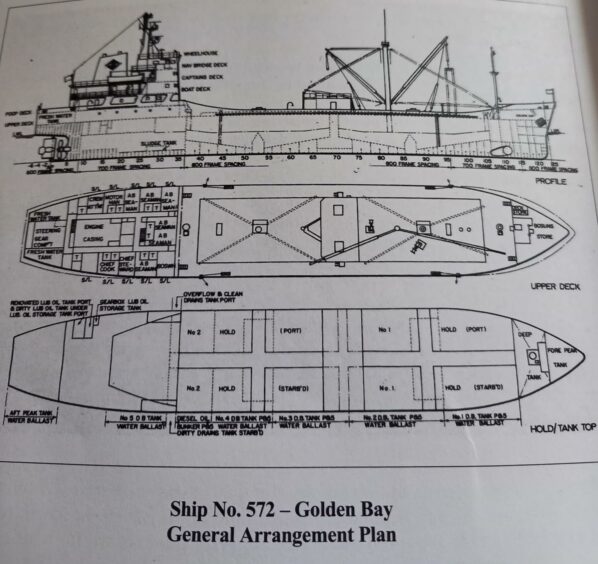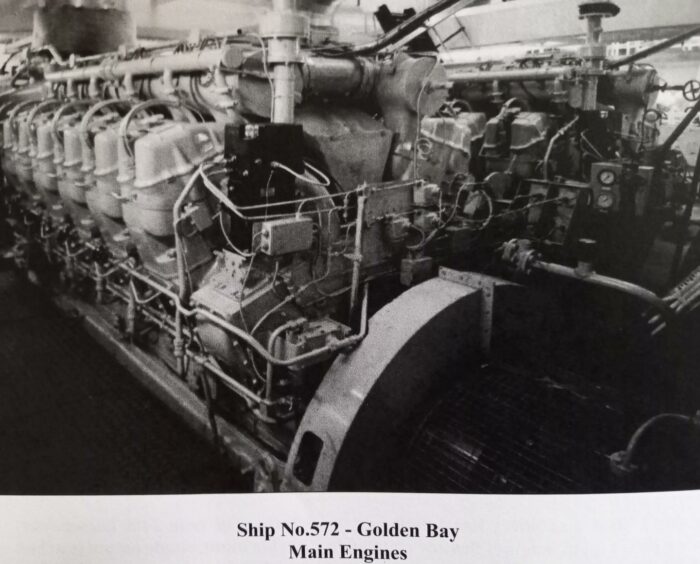The great Caledon shipyard in Dundee built more than 550 ships in its 107 year lifetime to 1981, and a few are still plying the high seas.
The yard’s entire output has been documented by Caledon’s chief engineering designer Jack Reilly in his book, The Caledon Shipyard, Its Foundation, The People, The Ships and Its Demise, and for Jack it’s always good to get feedback about what happened to any of the ships, where they might have ended up.
It’s particularly good to hear that one of the last vessels to be built in the year, ship no 572, Golden Bay, is still doing the yard proud forty years after its closure, and 42 years after her delivery to the Golden Bay Cement Co of New Zealand.
She was constructed for Blue Circle Industries Ltd for operation from a cement terminal at Tarakohe, at the north point of South Island, to deliver bulk cement to various cement retail units based around New Zealand.
It doesn’t sound like a glamourous life.
But Golden Bay has some impressive attributes and enjoys the absolute devotion of her skippers.
It’s not obvious from the outside why.
She’s 300ft long, weighs more than 3,000 tons and looks quite conventional, but it’s what she has on the inside that has turned her into the skippers’ sweetheart.
Jack was always proud of Golden Bay, and a letter he received from a former chief engineer on the ship last year made his chest swell even more.
From New Zealander Tony Skilton who was chief engineer on Golden Bay for 14 years, wrote: “I thought you might get more than a little satisfaction to know the old girl is still fully operational and earning her keep.
“The current Kiwi skipper (Ian Stuart) loves the ship – the bow thruster and Pleuger active rudder (fitted with a controllable pitch propeller unit) enable him to get into ports nobody would ever think of attempting without tugs.
“He gets a lot of satisfaction from demonstrating her manoeuvring characteristics to harbour pilots.”
Impressive manoevrability
This manoeuvrability means Golden Bay can literally move sideways and get into tight spaces.
Mr Skilton went on: “The ship has carried a total of 11.1 million tons of cement around Australasia, a pretty good record for a little ship.”
And if you imagined the ship would be a misery to work on, covered in cement dust, you’d be wrong.
Jack said: “The whole cargo plant system in the ship is sealed to ensure that dust in the open air and in the ship’s spaces is kept to an absolute minimum.”
Golden Bay also made life easy for her crew.
“The ship’s outward appearance does not give any inclination of the ship’s extensive and elaborate equipment installation,” Jack said.
“The Golden Bay has a fully automated cargo handling system and an engine room with sophisticated automation equipment that allows the ship’s engine room to be left unattended for up to sixteen hours per day when the ship is in the ‘full away’ condition at sea, or at nights in port.
“An engineer call out system is installed for calling out an on-call duty engineer should any abnormal condition occur.”
Praise
Mr Skilton praised the work of the Robb Caledon yard, saying in his experience of Chinese built offshore vessels, none will last “even half the life of Golden Bay.”
He said: “She turned out to be an excellent example of Scottish shipbuilding.
“We did 47 trips from Nelson to Brisbane between 1981 – August 1984 carrying 182.000 tons to the Queensland market.
“By April 2014 she had carried 10 million tons of cement and when she had departed New Zealand in May 2019 she had carried a total of 11.1 million tons around Australasia.
“A pretty good record for a little ship- so Jack Reilly, ex-yard manager at Robb Caledon, Dundee- well done mate!”
Track Golden Bay here.
History and registration
The Golden Bay’s history and registration known up to October 2021: October 25 1979 - APCM Blue Circle Cement UK 1993 - Golden Bay Cement Co. Ltd. Auckland New Zealand registered in Auckland with New Zealand flag. 2000 – Golden Bay Cement (Fletcher Concrete & Infrastructure Ltd.) Auckland. 2004 – Fletcher Concrete & Infrastructure Ltd. Managed by Golden Bay Cement, Auckland. From 1979 to 2017 Golden Bay was always crewed by Golden Bay Cement employed seafarers. The ship has just been sold October 2021 to a company in Mexico for US $3 million. That's is approximately half what she cost to build 42 years ago.
You might also enjoy:
Caledon dreaming: One man’s epic archive of a proud Dundee shipyard
SS Californian: Dundee-built ship forever associated with Titanic disaster














